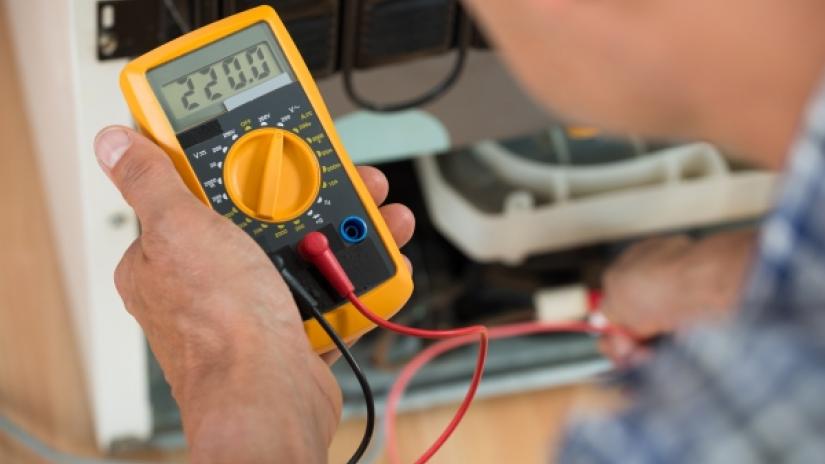How To Use A Multimeter To Test Voltage
February 08, 2022
Home, work, or car. The location doesn’t matter. Everyone ranging from an electrician to a baker should have a multimeter handy with them. You use multimeters to troubleshoot the electrical problems in your home or electrical equipment such as lamps, TV, laptop, car, and outlets. Multimeters are used to measure AC and DC voltage, currents, and resistance. We will focus on how to measure voltage so you know whether you might need an electrical repair service or not. We hope you won’t, but if needed, Mr. Electric of Dallas is always ready to help you.
AC Voltage
- Turn on your multimeter.
- Your multimeter has something that looks similar to a stove knob at its center. According to your multimeter, its knob options may vary. Some have AC and DC placed separately on the multimeter while others have it on one setting combined where you would select which type of voltage you’re measuring after bringing the knob to the correct setting. Turn your knob towards the AC setting.
- You will see two probes attached to the multimeter. Plug in the black probe into the COM hole, and the red probe into the V or voltage. While measuring AC voltage, the polarity doesn’t matter, so you can measure in any way with the probes.
Users with manual multimeters will have to adjust the knob scale according to the voltage they’re measuring whereas automatic multimeters will have voltage levels adjust by themselves.
DC Voltage
- Turn on your multimeter
- Turn your knob to select the DC setting.
- Plug in your black probe to the COM hole and your red probe to the V.
- Unlike AC, polarity matters while measuring DC voltage. If the probes are plugged in incorrectly into the electrical equipment you’re checking, the multimeter will display a negative value. Your red probe should always be plugged in on the positive, and the black probe should be on the negative.
Safety Tips
You will be dealing with electricity while using multimeters, so it’s important to take precautions and know what’s potentially dangerous while in use. There are several things to be wary about, even if you’re an experienced electrician.
- Check for physical damage on the multimeter, test probes, and accessories before you start measuring.
- Do a test run on a known voltage area. If there are false readings, you can know something is not functioning correctly.
- Make sure the test probes are not damaged. If damaged, throw them away. An electrical repair service cannot save them.
- Wear your protective gear – gloves, eyeglasses, headwear, etc.
- Have someone with you while doing the work. Having some company is nice in case something goes wrong.
- Avoid working in humid areas. Electricity is dangerous near water.
Choose Carefully
There are many different multimeter models on the market today. When choosing an option, don’t just go with the one that looks the most expensive and everyone says it’s "the best". Take your time and look through its features to determine which option will be best for use. This will increase your chances of reducing potential risks while working with your multimeter.
